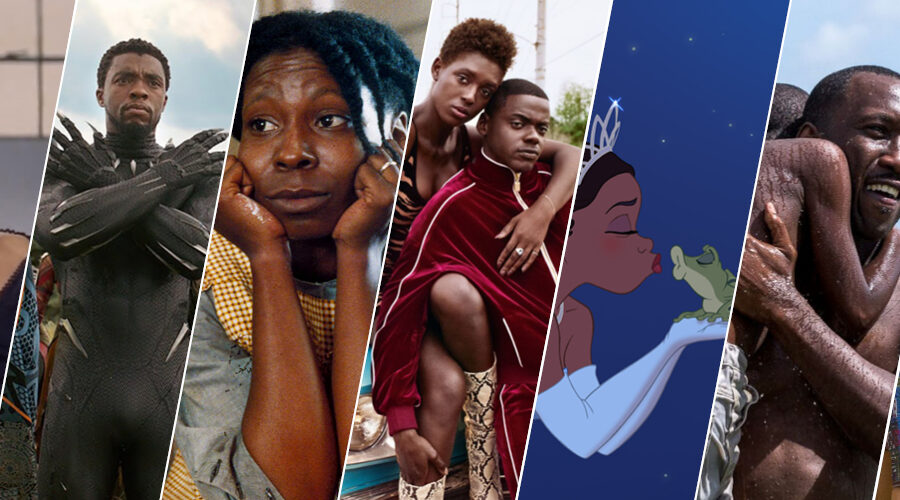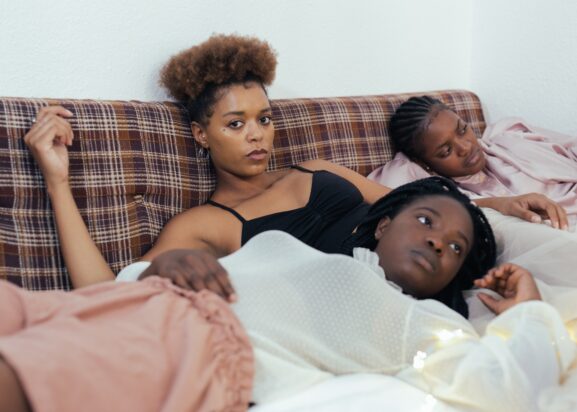The Rich History of Black Cinema and the Ever-Present Need for Equity
From minstrelsy and stereotype-laden caricatures to films that dabble in Afro-surrealism and intersectionality, Black representation in cinema has had several faces.
Whether it was through the charm of those like Dorothy Dandridge and Harry Belafonte, the badassery of the Blaxploitation era, or the futuristic structure of Wakanda, Black stories provide a channel through which Black folks across the diaspora can envision themselves– an important feat considering cinema’s historical inclination towards racist depictions of Black people.
Yet, as indicated by the current writers and actors strike and the overall state of the world, it is clear that representation barely scratches the surface. Equity continues to be a necessary effort in Hollywood.
The history of Black cinema begins in the silent film era with Something Good – Negro Kiss, a 1898 silent short film that is believed to be one of the earliest Black films. It is also known as the earliest depiction of an affection-filled moment between an African-American woman and man.
Other early Black films include The Railroad Porter, a 1912 comedy that is one the first films to feature a full all-Black cast, and Hallelujah, a 1929 musical that was one of the first sound films to feature an all-Black cast. Impactful as these films were– not only as representations of Black American life but as indications of cinema’s innovations– their existence was often overshadowed by more racist films.
The Birth of a Nation, a 1915 silent film that positions the Ku Klux Klan as a valiant force, and the 1939 epic “Gone With the Wind” which romanticizes the Antebellum South and American slavery, are two examples of Hollywood’s earliest hits– and of Hollywood racist propaganda. The legacies of these films are still seen today, as their portrayals of Black people as Mammies, Uncle Toms, savages, and other racist stereotypes are used to justify state-sanctioned violence, police brutality and the overall disenfranchisement of Black folks.
As a whole, the early 20th century contained many films depicting Black life and culture. The Scar of Shame, a silent race film released in 1929, offers a nuanced perspective on Black American class relations and colorism, according to Finger Lakes Film Trail. Despite being written by David Starkman and directed by Frank Peregini, who are both white, it is still praised for its portrayal of Black life. This starkly contrasts the public’s reception to the 1985 film adaptation of Alice Walker’s Pulitzer Prize Winning novel, The Color Purple, which was directed by Steven Speilberg. Upon its release, the film received much criticism surrounding its portrayal of Black men. Now, with the musical release of the film slated to come out later this year, critics point out that the 1985 film failed to highlight one of the book’s most important relationships– a queer one.
Black-led musical films such as Carmen Jones (1954), Porgy and Bess (1959) were popular in the 50s, while the 60s saw films such as the 1961 adaptation of the Lorraine Hansberry play A Raisin in the Sun and A Patch of Blue (1965). Blaxploitation ruled the 70s with films such as Shaft (1971), Superfly (1972) and Foxy Brown (1974), while the Spike Lee joints of the 80s gave way for the exploration of the Black experience through a legitimate Black lens.
The 90s and 2000s saw everything from Poetic Justice (1993) and Baby Boy (2001) to Deliver Us From Eva (2003) and Diary of a Mad Black Woman (2005). And throughout the 2010s and 2020s, we have had the pleasure of viewing Get Out (2017), Black Panther (2018) and ˆ (2023).
Through the good and bad, the stereotypical and stereotype-defying, the bad motha-shut-yo-mouths, the Ricky Bakers, Nina Mosleys and, more recently, the Fontaines/Tyrones, Black stories have always been here. Yet, Black talent continues to face barriers.
According to a 2021 study done by McKinsey & Company, Black actors receive significantly fewer opportunities early on in their careers in comparison to white actors. Black off-screen talent often exists at a minimum unless there is already a Black person in a senior position– and the representation of marginalized people in senior positions tends to be sparse. Yet, if addressed, McKinsey found that these barriers could unlock more than $10 billion in revenue.
Films that center on the Black experience have certainly proven to be successful, not only for their ability to attain profit but as cultural staples that members of the Black community reference throughout the years. However, Black-led stories and representation are not enough when the people creating these stories and acting them out are not paid adequately or are not afforded the opportunities to tell these stories.
As of 2021, Black actors only made up 13.24% of the actor workforce, while white actors made up 56.98%, according to Zippia. And compared to other ethnicities, Black actors have the lowest average salary at $49,210.
Black representation has undoubtedly made strides over the years, and Black storytellers are certainly more present now than before. But it will be equity that truly moves mountains.
Cory Utsey (she/her) is a freelance writer, blogger and communications specialist. A Howard alumna, her work often highlights the intersections of entertainment, culture and history. Check out her e-portfolio here: https://coryutsey.journoportfolio.com/



